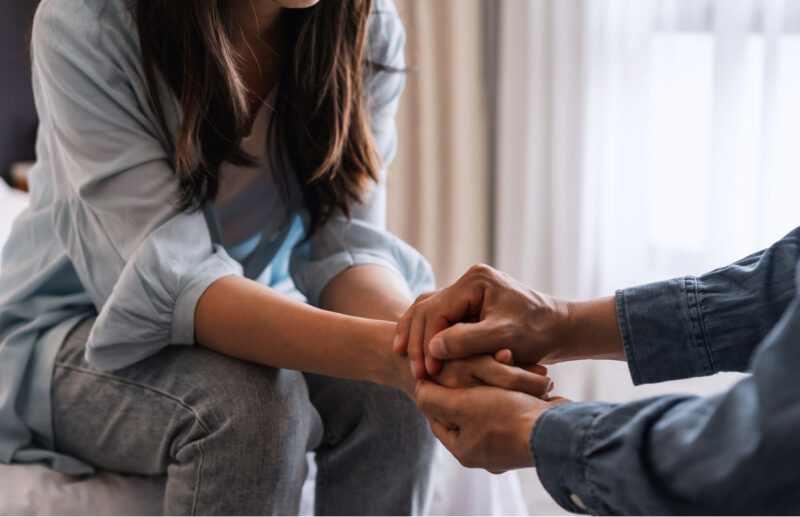Blog Short #127: Harsh Communication Never Works

Photo by SchulteProductions, Courtesy of iStock Photos
I was on Facebook this morning to post something, and against my better judgment, I scrolled a little and looked at comments people were making to some posts of interest. I was stunned at the incivility and harshness of some of the comments, although not surprised.
Regardless of the subject, there were no constraints on how people talked to each other in response to something they either didn’t like or didn’t agree with. Unfortunately, this is not a trend exclusive to social media – it seems to be on the rise in general.
That brings me to today’s subject, which is this:
There’s no redeeming value in harshness, whether in word or deed.
Let’s jump right in.
Emotional Discharge
There’s a term I learned about in graduate school called affectomotor discharge. It comes from psychoanalytic theory, but in a nutshell, it’s a descriptor for a full-fledged toddler tantrum. Its whole purpose is to discharge emotions. It means spewing out intense emotions without the benefit of having your thinking brain on board.
 Although that’s normal for toddlers because emotional discharge is part of their developmental phase, and they don’t have the cognition to be self-aware, it’s not okay for adults!
Although that’s normal for toddlers because emotional discharge is part of their developmental phase, and they don’t have the cognition to be self-aware, it’s not okay for adults!
Moreover, affectomotor discharge is not a healthy means of dealing with emotions, yet I see it everywhere. It seems to have become popular and acceptable in media and, unfortunately, in everyday interactions.
Here’s why it’s not healthy.
Unbridled emotional discharge doesn’t allow you to work through your feelings and use them. You get temporary relief, and then they’re back.
It’s a popular myth that if you discharge your negative emotions, they’ll be gone, you’ll feel better, and problems will resolve themselves. That’s not true. Expressing negative emotions correctly can help you gain insight or solve problems. But just discharging them willy-nilly won’t do the job.
In fact, when people express anger by fully engaging in it with no control or effort to monitor the expression, the feeling escalates.
Expressing negative emotions productively, especially anger, requires two processes going on simultaneously:
- Verbalizing the feeling without attacking.
- Mindfully watching the process so you can monitor how you’re expressing it.
You can feel something, verbalize it, and mindfully keep your thinking brain on board to watch the process and guide it as you engage in it. This capacity to feel something and maintain self-awareness simultaneously is what makes us human. When we don’t do that, we regress down to lower phases of development – like a two-year-old having a tantrum.
The second reason affectomotor discharge isn’t healthy for an adult is that it’s not productive and, in most cases, is damaging both to the person doing it and the person on the receiving end.
Let’s think about it from a different vantage point.
What’s the purpose of communication?
I come up with five purposes. They are to:
- Inform
- Problem-solve
- Influence
- Express feelings
- Facilitate the interchange of ideas and opinions
If you think of all the various ways you communicate, most of them will fall under one of these categories and sometimes span several at once.
Okay, so categories give us a way to look at it, but what makes communication productive? Two elements are necessary. They are:
- Creating understanding
- Making a connection
The real intent of any healthy communication is to create understanding between the speaker and receiver.
That doesn’t mean you have to agree on something, but rather that you understand what the other person is saying, feeling, thinking, and needing you to hear. You can do all of that without agreeing with the content.
It’s also essential for the speaker to know that you understand.
In other words, you listen to get what the other person says and then let them know you got it. You might do that by repeating it back or asking questions to clarify. Doing that shows interest and respect for someone’s right to speak and communicate what’s on their mind.
Secondly, when you take the time to understand fully what you’ve heard, and especially what the speaker feels, you create a connection between the two of you.
This happens even when the topic is complex or contentious.
What to Do and Not Do
To facilitate this process, there are do’s and don’ts.
The dos are:
- Treat the other person with respect regardless of the subject matter. You can do this even when you strongly disagree.
- Go for the feeling. How is the person feeling about what he’s saying? By empathizing, you make that all-important connection.
- Figure out what the intent of the conversation is. What does the speaker want? You can tell pretty quickly if someone’s trying to provoke or engage you in an argument. In that case, you can call them on it or opt out. You could say, “Seems like you’re looking for a fight. Yes?” They’ll either back off and be more conciliatory or try harder to provoke you, at which point you can opt out.
- Always maintain your self-respect and keep your emotions in check. Be self-aware of your demeanor as you speak.
The don’ts are:
- No bullying, one-upping, or personal attacking.
- Own your feelings, and don’t blame them on the other person, even if you’re provoked. You’re in charge of how you react.
- Express interest in the other person’s point of view and do your best to understand through their lens.
- Avoid conversations with someone who’s looking for a fight.
- Make “I” statements, not “you” statements.
- Listen first, then respond.
Other Strategies You Can Use
1. Keep conversations civil.
You can maintain civility while expressing your thoughts, feelings, and needs. You never need to be harsh. You can be firm without being offensive. Firmness accompanied by respect is far more productive than personal affront. The latter brings on defense and sets up a win-lose situation where nobody actually wins.
2. Opt out.
Secondly, avoid conversations where the other person’s primary intent is to create conflict, provoke you, or launch a personal attack. There’s absolutely no point in entering into conversations with these agendas. You’ll know this is happening when:
- There’s a full-on personal attack.
- The words don’t match the feeling underneath. The person says one thing, but you feel something else coming from them. There’s an ulterior motive or a set-up.
- There’s no room for open discussion. The other person can only see what they think and will hear nothing else.
3. Set rules.
When you have difficult conversations in your relationships that lead to intensive emotional discharge, you might consider setting some ground rules that everyone can follow to prevent things from getting out of hand. I’ve listed a few previous blogs at the end of the page you can read that will help you do that.
4. Decide how you want to behave.
One way to ensure you don’t fall into affectomotor discharge yourself is to set up ground rules you can follow regardless of what anybody else does.
Don’t let someone inflame or provoke you into behaving in a way you don’t wish to. Align your style of communication with your values and stick to it.
That requires self-discipline. You can always take a break during a conversation when you feel you can’t control your emotions. That’s acceptable and preferable to saying and doing things you disapprove of. Taking a break is not the same as avoidance, as long as you revisit the issue when you’re calmer and ready to resume it.
Full Circle
We’re back to where we started, which is:
There’s no redeeming value in harshness, whether in word or deed.
Don’t be pulled into foolish affectomotor discharge. It might give you satisfaction for a moment, but it will hurt you in the long run.
That’s all for today.
I hope you have a great week!
All my best,
Barbara
Other articles to read:
7 Tips to Improve Your Communication Skills
How to Be Heard When You Talk
When You Should Cut Your Losses and Step Out of a Conversation








